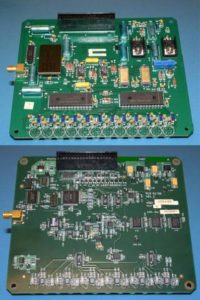Heading Off Obsolesence
 Challenge:
Challenge:
This particular customer approached EIT 2.0 LLC with a legacy product being threatened by obsolete and end-of-life (EOL) components as well as dozens of sole-sourced components, forcing them to be heavily dependent on—and at the mercy of—individual vendors.
Their design had 12 optical channels to measure and analyze ultraviolet (UV) to infrared (IR) wavelengths of light for medical purposes; it utilized Through-Hole Technology (THT) and a labor intensive fabrication process. The customer’s hybrid voltage to frequency converter (VFC) supplier had begun driving prices up and was on the verge of ceasing production of the component all together.
In addition to high cost and relatively high production failure rates, the design’s 12 hybrid photodiodes had temperature drift issues which limited overall performance.
Objective:
EIT 2.0 LLC was therefore tasked with redesigning the board to reduce cost, improve quality, and decrease customer dependence on sole-sourced components.
Solution:
EIT 2.0 LLC engineers redesigned the customer’s board to utilize Surface-Mount Technology (SMT) as a means of transforming the board production into a near-fully automated assembly process, increasing quality, and reducing failure rates. A VFC circuit and digital phase-lock loop were designed, which exceeded the specifications of the original hybrid VFC at one tenth of the original cost. Photo diodes with external amplifiers replaced the original hybrids, thereby solving the temperature drift problem while simultaneously providing a per-channel cost reduction of more than 50%.
Result:
The customer ended up with a new, RoHS compliant board design that was a massive improvement over the original with a 40% cost reduction, decreased failure rates, improved performance specifications, and a minimal number of sole-sourced components.